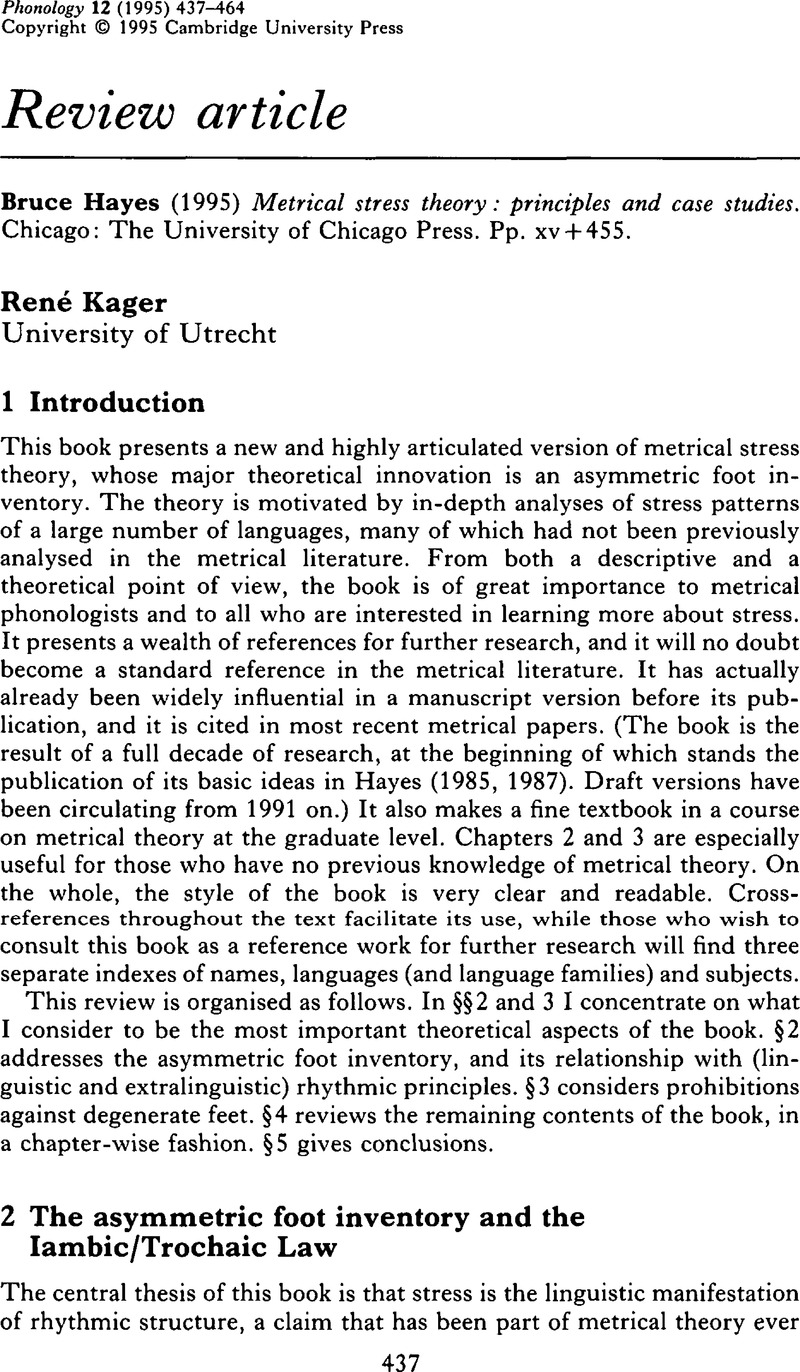Crossref Citations
This article has been cited by the following publications. This list is generated based on data provided by Crossref.
Di Cristo, Albert
1999.
Vers une modélisation de l'accentuation du français: première partie.
Journal of French Language Studies,
Vol. 9,
Issue. 2,
p.
143.
Mellander, Evan W.
2003.
(HL)-creating processes in a theory of foot structure.
The Linguistic Review,
Vol. 20,
Issue. 2-4,
Hyde, Brett
2007.
Non-finality and weight-sensitivity.
Phonology,
Vol. 24,
Issue. 2,
p.
287.
Hyde, Brett
2007.
Issues in Banawá Prosody: Onset Sensitivity, Minimal Words, and Syllable Integrity.
Linguistic Inquiry,
Vol. 38,
Issue. 2,
p.
239.
Hyde, Brett
2011.
The Blackwell Companion to Phonology.
p.
1.
Hyde, Brett
2011.
The Blackwell Companion to Phonology.
p.
1.
Breteler, Jeroen
and
Kager, René
2022.
Layered feet and syllable-integrity violations: The case of Copperbelt Bemba bounded tone spread.
Natural Language & Linguistic Theory,
Vol. 40,
Issue. 3,
p.
703.



